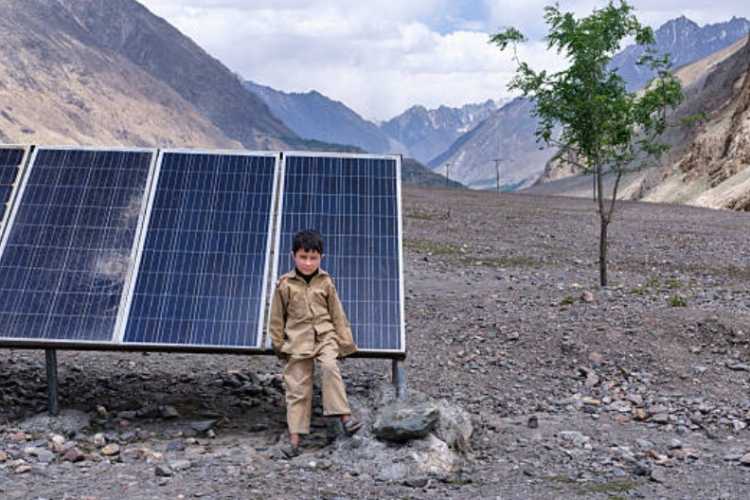No country can scale renewable energy without robust infrastructure. Solar and wind power are variable, location-specific, and often generated far from consumption centres. Dedicated transmission corridors are needed to evacuate this power efficiently and reduce curtailments. Upgraded distribution systems and smart grids must manage intermittency, balance demand in real time, and enable two-way flows in decentralised systems such as rooftop solar.
Storage infrastructure—batteries, pumped hydro, and green hydrogen—provides grid stability during periods of low generation. At the local level, rural mini-grids and solar pumps support decentralised solutions. On the supply side, investments in domestic manufacturing of panels, turbines, and related equipment reduce import dependence. Institutional support, from forecasting tools to power exchanges and market mechanisms, makes renewable operations more efficient. Infrastructure, in short, is the backbone of India’s clean energy transition.
READ | Weak private investment threatens India’s growth momentum
India’s ambitious targets and the reality gap
India’s rising energy demand, driven by urbanisation, industrialisation, and higher living standards, makes a transition to low-carbon systems imperative. The country has pledged net-zero by 2070 and a 500 GW non-fossil capacity by 2030. As of January 2025, renewable energy accounted for 46% of installed capacity, but just 22–24% of actual generation—evidence of intermittency, grid bottlenecks, and underutilisation.
The problem is uneven across states. Some regions with vast potential have failed to grow capacity, largely because of inadequate investment in renewable infrastructure.
State budgets and skewed priorities
A few states—Chhattisgarh, Jharkhand, Gujarat, Haryana, Maharashtra, and Uttar Pradesh—have prioritised renewable energy in their budgets. But most continue to spend disproportionately on revenue expenditure rather than capital investment.
Capital expenditure builds long-term assets—solar parks, transmission networks, storage facilities—while revenue expenditure covers salaries, operations, and subsidies. States that neglect capital formation risk stagnation, since infrastructure, not subsidies, determines future capacity.
State finances are central to India’s clean energy transition. With limited fiscal space and rising demands on welfare, subsidies, and infrastructure, many states struggle to prioritise renewable investments. Their dependence on central transfers and borrowings often leaves little room for capital spending on grids, storage, and manufacturing. Unless states improve fiscal management and reorient budgets toward long-term assets, the imbalance between revenue expenditure and capital formation will persist, slowing India’s march toward its clean energy targets.
Capital spending: The exception, not the rule
The contrast is stark. Chhattisgarh and Gujarat allocated 89% and 81% of their renbewable energy budgets, respectively, to infrastructure. Their approach shows a commitment to building lasting capacity.
By contrast, Haryana, Maharashtra, and Jharkhand devoted virtually their entire renewable budgets to subsidies and operations, leaving nothing for infrastructure. Uttar Pradesh spent 94% on revenue items. Even states with significant potential, such as Maharashtra and Haryana, report low installed capacity—underscoring the consequences of neglecting capital expenditure.
Towards a balanced fiscal strategy
Sustainable growth demands a more balanced allocation between capital and revenue. States must gradually raise capital expenditure shares by 15–20% annually over three to five years. This phased approach would preserve ongoing operations while steadily expanding infrastructure.
Public-private partnerships can help bridge funding gaps, as Gujarat and Chhattisgarh have demonstrated. To succeed, states will need flexible targets, regular progress reviews, financial innovation, and regulatory clarity. Capacity-building support for state agencies will also be essential.
India’s renewable energy journey is at a crossroads. Meeting ambitious national targets will require more than headline announcements of capacity expansion. Without systematic reforms in state-level spending, grid modernisation, and manufacturing, installed capacity will remain underutilised and generation targets unmet.
States that shift from subsidies to infrastructure, from short-term relief to long-term investment, will drive the next phase of India’s energy transition. Others risk falling behind, weakening the country’s collective march towards its clean energy goals.
Chetana Chaudhuri is Fellow, and Subrata Sekhar Rath Consultant at the National Council of Applied Economic Research (NCAER), New Delhi.

